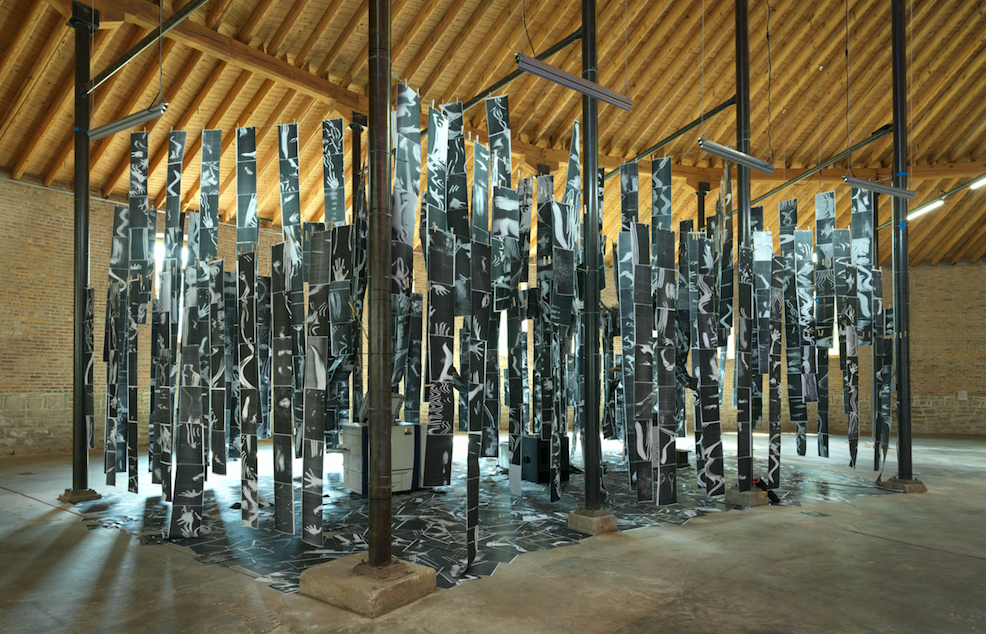This year, the Paris institution presents the exhibition “Singing Stones” in the Roundhouse of Chicago’s DuSable Museum of African American Art. The site, which was closed for several decades, opened exceptionally to welcome Palais de Tokyo’s first US exhibition, created in partnership with EXPO Chicago. “Singing Stones” brings together the work of 12 international artists and a designer.
The Chicago building, designed in 1881 by the architecture firm Burnham & Root, becomes the ideal theatre for a dialogue between art and architecture. The exhibition, which was largely made possible by the patronage of the Emerige Foundation and the Institut français — looks into the relationship between these two disciplines and particularly into the ways in which artists appropriate the language of architecture, whilst the tenets of the latter influence the production of plastic arts. Palais de Tokyo curator Katell Jaffrès visited the studios of several Chicago artists over a year as part of her research for the show.
Running alongside Chicago’s Architecture Biennial, “Singing Stones” features artists who have worked in a space which is, itself, a true work of architecture. “In its dialogue with art, the architecture reveals the construction of a history, the history of urbanism” in the words of Jaffrès.

Cauleen smith. The right time, before and after. 2017
Wilfrid Almendra, Thomas Teurlai and the collective Floating Museum have all created in situ installations in dialogue with the architecture of the Roundhouse.
The exhibition’s title “Singing Stones” suggests that the show aims to go beyond the purely material notion of architecture. The site, in Chicago’s Southern part, is located in a “prevalently African-American area”, and its architecture allows to open up a discussion on the existence of “dialogue, as well as on social and cultural issues”. Wilfrid Almendra, (whose work explores “collective utopias”) “tells us the story of a social urbanism”. Floating Museum works with film, reflection and the repetition of images.
The exhibition benefits from an exceptional environment. “Visitors activate the empty spaces by entering them” says Katell Jaffrès, “Cauleen Smith has worked on the empty space at the center of the Roundhouse, where the echo is very strong. Her work invites visitors to read aloud texts presented on the journals. A map indicates the position from which the reader’s voice can create an acoustic vortex, making the whole building resonate with words”. The artist also worked on the building’s high windows, creating “shadows of color hitting the various works depending on sun’s position at a given moment”.
For her part, artist Bouchra Khalili presents a film she shot in New York in 2014, an account of the place immigrants have within US society, largely conditioned by their need for a job. Khalili’s film raises questions on the city, its living spaces and on the need for dialogue.
Thomas Teurlai also participates with an in situ installation, activated by an equipe of Chicago-based dancers.

Thomas Teurlai, Scores for bodies and machines, 2017. Photocopieuses, papier, cable acier, microphones magnétiques, sound system. Courtesy de l’artiste & galerie Loevenbruck (Paris). Performance : Anna-Martine Whitehead & Benjamin Wardell
“Singing Stones” also features works by Daniel G. Baird, Dorian Gaudin, Lola Gonzàlez, Guillaume Leblon, Florian Pugnaire & David Raffini, Andrew Schachman and Raphaël Zarka.
“Singing Stones” will run through October 29.
Text: Henri Robert









